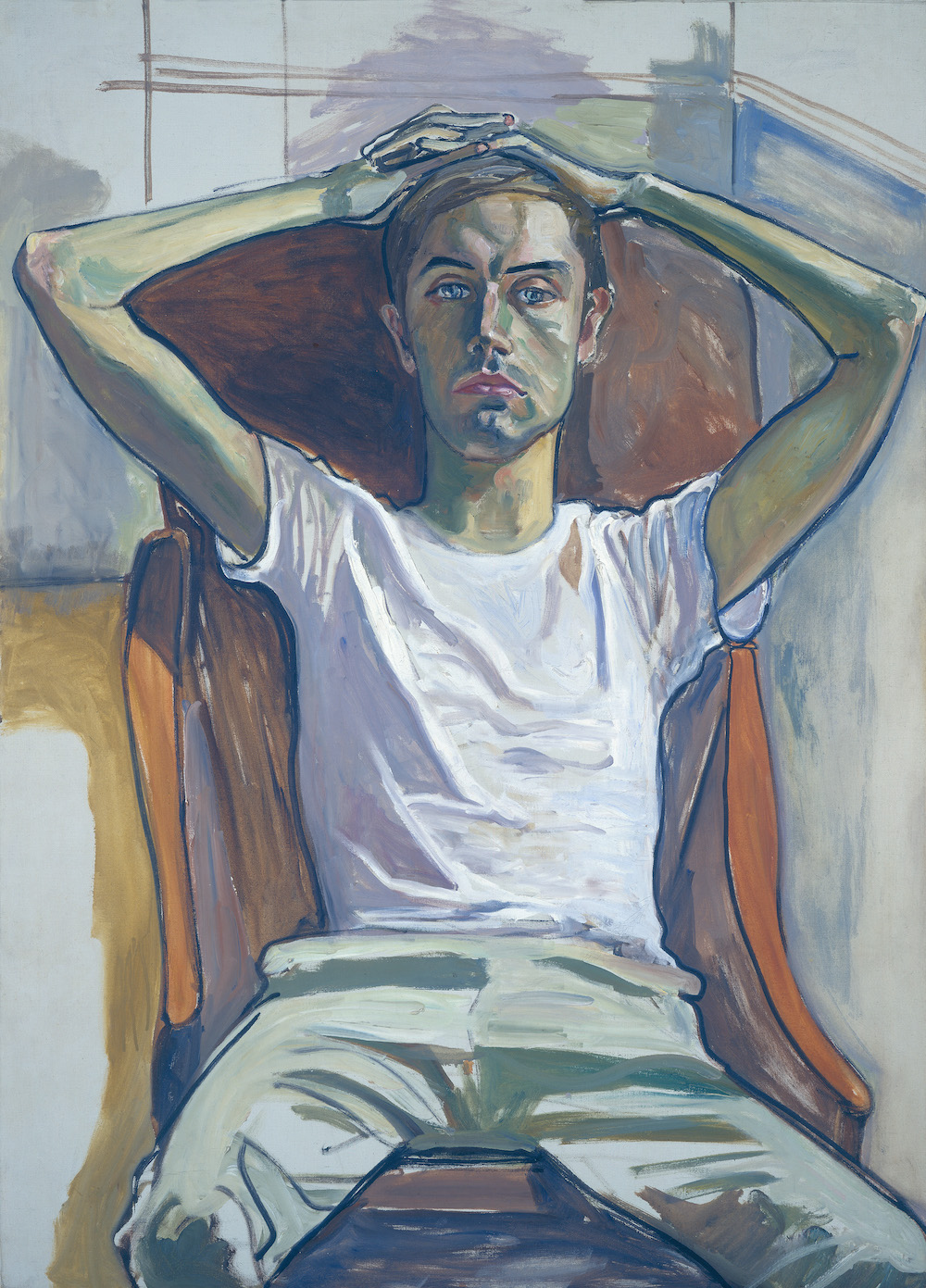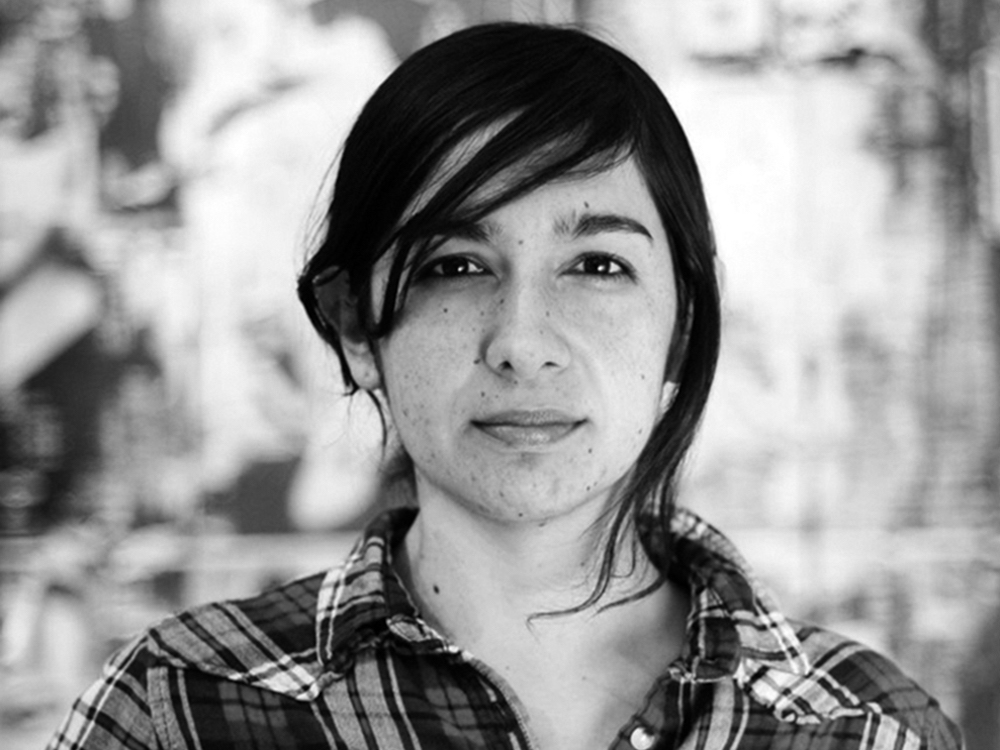【beeg sex videos】
Staff Picks: Boulders,beeg sex videos Brushstrokes, and Bud Smith
This Week’s Reading

Alice Neel, Hartley, 1966, oil on canvas, 50 × 36″. National Gallery of Art, Washington, D.C. Gift of Arthur M. Bullowa, in honor of the fiftieth anniversary of the National Gallery of Art. © The Estate of Alice Neel.
Alice Neel’s paintings are a tonic for the modern world—but not for the reason one might expect them to be. At first glance the tender, vivid portraits in “People Come First,” her sprawling retrospective at the Metropolitan Museum of Art, seem refreshing in contrast to the abstract expressionist movement they developed alongside. But pausing with each painting, I realized more and more that my feeling of rejuvenation was freedom from fatigue at the dull literality of photography; though she is a twentieth-century painter, our image-saturated twenty-first needs Neel. We like to see reality represented (you already know about social media), but for some reason, portraits and still lifes are associated with the sensibility of a distant past. Neel’s deep interest in the world around her, from Andy Warhol to pregnant women to fruit in bowls of cut glass, vibrates with an intensity that also feels friendly, accessible, familiar. In her imperfect proportions, thick brushstrokes, and dreamy palette, Neel offers a rare pleasure: to experience the world mediated not by machine but by hand. —Lauren Kane
I first encountered Ayşe Papatya Bucak’s writing as part of a course called Women in Literature. And I remember the professor asking what we thought the course was about, what kind of material should be covered—literature by women, literature about women, literature for women? And I read “The History of Girls,” which is now the opening story in Bucak’s debut collection, The Trojan War Museum, and I felt the weight of the rubble that had trapped these girls after an explosion and the pressures placed upon them apart from the rubble, and I remember thinking, This—this is what it’s about. These stories have a way of letting loose featherlight sentences that land with the heft of, well, “What’s the heaviest thing you can imagine? A boulder? A house? An airplane? In all of the world, what is the heaviest thing? Can you even imagine it?” Her writing often invokes the imagination—it doesn’t seek to replace it—asking the reader to reflect, to participate in the making of meaning. Each story in The Trojan War Museumlaces contemporary social concerns with cultural research, mythic imagery, and folkloric candor to investigate ideas of womanhood, Turkish identity, and storytelling itself. “Iconography” asks, “And how would you describe hunger?” The deftly structured title story braves the question, “Who is the god of the IED and the RPG?” “An Ottoman’s Arabesque” asks, “Who can say what they saw?” And I find myself answering, This—this is what it’s about. —Christopher Notarnicola

Fernanda Melchor. Photo courtesy of New Directions Publishing.
I read Fernanda Melchor’s virtuosic Hurricane Season, translated from the Spanish by Sophie Hughes, in a single sitting. The story revolves around uncomfortable truths and traumas that one should probably unpack slowly, but the language—sustained, glorious snarls of frustration, sorrow, and rage, infused with details of place and time that coalesce into a heavy, uneasy atmosphere—propelled me inexorably onward. The people of this book are, for the most part, terrifying in their abjection; the title could as easily refer to lives in a perpetual state of disaster as it could to the way they come together like elemental forces that end in a woman’s murder (no spoilers—the body appears on page 2). One might avert one’s eyes from such characters in the street, but Melchor renders them beautiful by looking so closely. —Jane Breakell
The poet Lee Soho’s debut collection, Catcalling(translated from the Korean by Soje), creates a kaleidoscopic effect as it shifts through forms, its poems appearing sometimes as dialogues, sometimes as illustrations, and sometimes as a photograph of a pile of notes. All of the poems included in this collection, though, explore what it means to be a woman in contemporary Korea, dissecting the layers of abuse that the narrator experiences from family, lovers, and strangers. Seven poems under a section titled “Kyungjinmuseum of Modern Art” take works by various women artists as their jumping-off point, drawing from Marina Abramović, Louise Bourgeois, Shirin Neshat, Tracey Emin, and more. The result is a bold exploration of the role of the female artist and her place within a society. “What cleans up your mess and gets tossed out like a rag?” writes Lee with acidic precision in the collection’s penultimate poem. “A woman.” —Rhian Sasseen
In the universe of Bud Smith’s fiction, things are very weird, yet, at the same time, incredibly normal. Take, for instance, his story collection Double Bird: on the one hand, cars won’t start and bills are past due; on the other, characters flee society to live in the hollow center of the earth and take off into the sky on the back of a giant eagle named Birthday. As in “Violets,” Smith’s story from the Summer 2020 issue (the briefest of summaries: foreclosure, a purple bicycle, arson, a giant jigsaw puzzle that can be seen in full only from a hot-air balloon), the unremarkable quotidian in Double Birdtakes such a weird turn that it ultimately comes back full circle, and we are suddenly able to see just how unbelievable life is. Even as the characters show up to work and go to AA meetings and have sex and drink beer and do all the other mundane things the living do, life is depicted as full of magic, possibility, and beauty. There’s a disorienting quality to these stories, in the sense that the everyday appears unfamiliar, utterly brand new. Just read one character’s rumination on the day turning over into night: “Gradually the light of day got brighter—and get this—then the light got dimmer dimmer dimmer dimmer. It stayed that way for a while. And then we did it all again.” Anything and everything can be beautiful, can be full of joy, can be truly amazing, if only we could see it—and get this—Smith’s stories go out of their way to show us. —Mira Braneck

Bud Smith. Photo courtesy of Smith.
Search
Categories
Latest Posts
Internet for All
2025-06-27 02:26Artworks in the Room Where I Write by Diane Williams
2025-06-27 02:02The Code of Hammurabi by Jenny Slate
2025-06-27 01:57Redux: The Deep Well of Other Beings by The Paris Review
2025-06-27 01:15Best GPU deal: Get the MSI RTX 5080 for $1,249.99 at Best Buy
2025-06-27 01:14Popular Posts
Use Gmail Filters to Automate your Inbox
2025-06-27 02:43Ghost Hunting with Edith Wharton by J. Nicole Jones
2025-06-27 02:29Just Enjoy Every Fucking Blessed Breath by Rob Tannenbaum
2025-06-27 01:56Séance Sights by The Paris Review
2025-06-27 01:16Featured Posts
Meta says some AGI systems are too risky to release
2025-06-27 03:19Poetry Rx: The Radiant Bodies of the Dead by Claire Schwartz
2025-06-27 03:10The Man Who Eats Glass by Eliane Brum
2025-06-27 02:40Redux: Gold
2025-06-27 02:00Popular Articles
A Letter to My Sons by Imani Perry
2025-06-27 02:10You Used to Tell Stories by Lynda Barry
2025-06-27 02:00The Uncanny Child by Elisa Gabbert
2025-06-27 01:46Best iPad deal: Save $70 on 10th Gen Apple iPad
2025-06-27 01:04Newsletter
Subscribe to our newsletter for the latest updates.
Comments (993)
Prosperous Times Information Network
Google 'Ask for me:' AI that calls businesses on your behalf for pricing and availability
2025-06-27 03:26Miracle Information Network
Portrait of Our White Mother Sitting at a Chinese Men’s Table by Jennifer Tseng
2025-06-27 02:20Discovery Information Network
John Ashbery’s Reading Voice by Marit MacArthur
2025-06-27 01:13Exquisite Information Network
The Man Who Eats Glass by Eliane Brum
2025-06-27 01:09Sharing Information Network
Then and Now: 5 Generations of GeForce Graphics Compared
2025-06-27 01:03